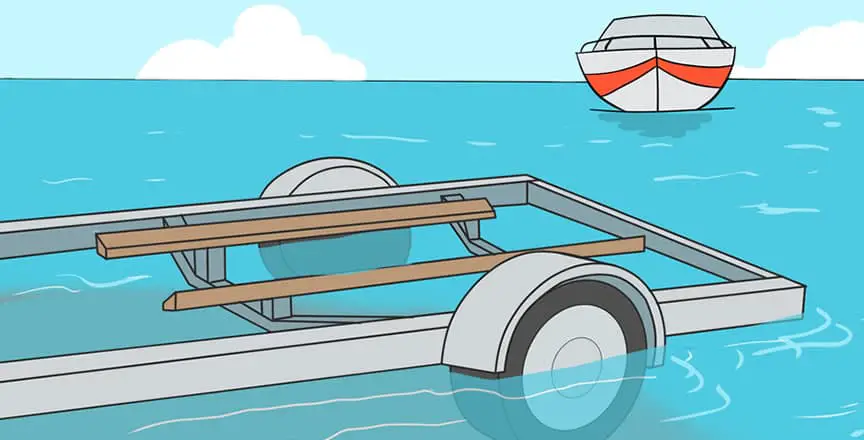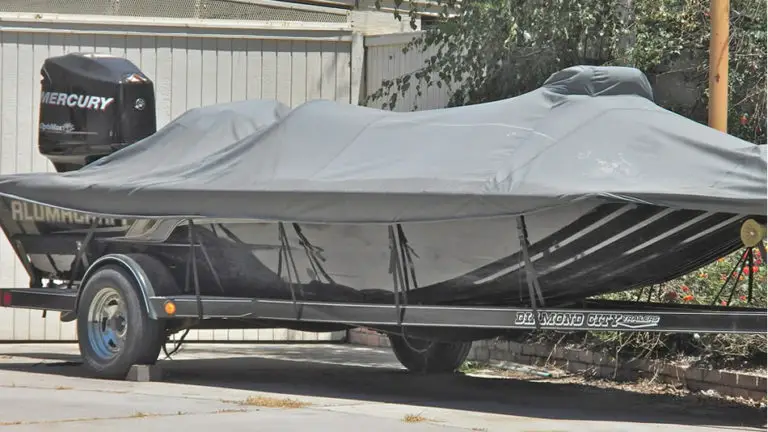Launching a Boat For The First Time – What To Do and Not Do
Launching a boat is very easy, and it’s a lot of fun once you know what you are doing. Sure, when you are doing it for the first time, it may not be so easy to do, but understanding the system required and practicing it to perfection can make the process of launching a boat one of the most fun experiences you have.
Do not be nervous about getting your boat on and off a trailer so that you can take a cruise. All you have to worry about is learning the process for doing that, and this post will talk all about that.
What Do You Call It When You Put a Boat In The Water?

Knowing how to launching and retrieve (the process of bringing the boat out of the water) a ship is an essential part of boating, and it’s something that every boater should know how to do.
Steps For Launching a Boat
Pre-launch procedure:
Before you begin your descent down the boat launch there are a few things that you should prepare ahead of time.
Step 1 – Pulled over and out of the way from other boaters, you can begin to load your equipment into the boat from your truck. Never do this on the boat launch, the boat launch is for getting in and out of the water quickly.
Once you are all loaded, you can begin the launch.
Launch Procedure:
Step 2 – Once the coast is clear and it’s your turn, you can now begin to back your boat down the boat launch. Stop once the trailer tires start to get submerged. Don’t forget to take your vehicle out of gear and into Park and apply the parking brake before you exit the vehicle and proceed to walk towards the boat and trailer.
Step 3 – Remove straps and any tie downs that are securing the boat to the trailer. Don’t remove the winch cable from the bow eye just yet.
Step 4 – To avoid shorting out your equipment, you should disconnect the trailer lights if they are not waterproof.
Step 5 – Insert your drain plug.
Step 6 – Now, slowly back your trailer into the water until the motor is submerged. Start up the engine and let it run for about a minute to make sure it’s working correctly.
Step 7 – Continue to back the trailer into the water some more until the boat begins to float. At this time you can disconnect the winch cable.
- If you are launching by yourself, you can guide your boat over to the dock quickly and tie it down securely so you can proceed to move your truck and trailer off the ramp and allow the next person to go.
- If you are launching with a friend, you can have your friend sit in the boat as you back it into the water, then once the winch cable is disconnected, they can drive your boat away from the launch while you drive the vehicle off the ramp.
Can You Launch a Boat By Yourself?
A simple answer to the question above is YES! It might not be all that easy when you are starting, but through learning and practice, you can launch a boat by yourself. So if you have been doing it with a partner before, maybe it is time for you to learn and practice more so that you learn how to do it yourself in case a situation arises.
Here is a short process to show you how to launch a boat by yourself. With this process, you can do it faster than with a person helping you, and it takes a short time to learn it.
#1 – Park at the side and get ready to launch:
When launching a boat, you want to pull over to the side of the ramp out of everyone’s way to check your stuff out. You do not want to park at the ramp and block other people looking to launch as well. This is entirely disrespectful and can cost people their time and convenience, especially if the facility you are using is busy. By parking to the side, you can stay calm and confident as you check through your stuff. You also want to insert the drain plug at the back of the boat as this will save you a lot of stress. Also, you should tilt the engine up to avoid prop damage and remove the back transom straps and the stabilizer of your motor.
#2 – Start descending down the ramp:
When you slowly begin your descent down the ramp, be advised against unhooking the bow of your boat before you get to the edge of the water as it can cause severe accidents. At the edge of the water, leave your tow vehicle (ensure you park it) and unhook the safety chain from the bow of your boat with the winch strap still left hooked up. Take about two feet of the strap from the winch at the front while it is still hooked to the boat and flip the ratchet pawl to ensure the only direction the winch can turn is counter-clockwise.
#3 – Carefully release your boat into the water:
Back your boat and trailer with ease into the water until your boat begins to float, as it will allow the boat’s nose to be released from the roller. At the point when the boat gets released from the roller, you can stop backing your boat into the water. All you have to do is to park your tow vehicle, walk to the trailer and unhook the winch strap from the boat’s bow. Now quickly get into your boat and move it a little way down the dock and tie it down. Return to your vehicle and drive off the ramp to allow the next person to use it.
Caution: Be careful when walking on the trailer as you could slip and fall.
How Far to Back Boat Trailer Into Water?
Backing your boat into the water is a necessary but very important procedure, and it should be carefully and slowly done. The procedure can be done by one person, but if you are not entirely sure, you can ask another person to help you out. Here is how to know how far back you should back the boat trailer into the water:
- When you are doing it alone:
Back your boat into the water slowly until it begins to float slightly. At that time, you can unhook the winch line and use the bow, as well as the stern lines to help guide the boat out of the trailer and into the water. At this point, you should safely tie your boat to the dock so that you can remove your vehicle from the ramp for others to use. You have to be careful and watchful when doing this alone so that you can know when the boat has started floating.
- When you have help from a partner or partners:
When launching with another person, you can ask the person to watch the boat while you back it into the water slowly and tell you when to stop. Also, the person can sit on the boat while you back it in so that he can release the winch line and drive the boat while you take your tow vehicle to the side of the ramp for others to use. If you have two people to help you, one of them can watch while the other sits on the boat.
What Should You Not Do When Launching a Boat?
- Don’t leave your trailer lights plugged in if they’re not sealed or waterproof.
- Don’t launch without the drain plug in. You will be amazed at how often someone forgets to put the drain plug in before launching their boat.
- Don’t remove the winch line from the bow eye until the boat is in the water and you’re ready to pull away, or else you will end up tipping your boat like this.
- Don’t use the launch as your opportunity to load the boat with gear from your truck. Any equipment such as life jackets, coolers, fishing rods, and so on, should be either loaded before you back down the boat launch, or carried over to the boat once you’ve launched then docked.
- Don’t practice driving your trailer in reverse for the first time at the boat launch, and especially on a busy day.
Conclusion
Launching a boat is a straightforward procedure if you know the steps involved and practice them over time. When you get the hang of it, you can launch and ride when you want and have an excellent experience without troubling others.











